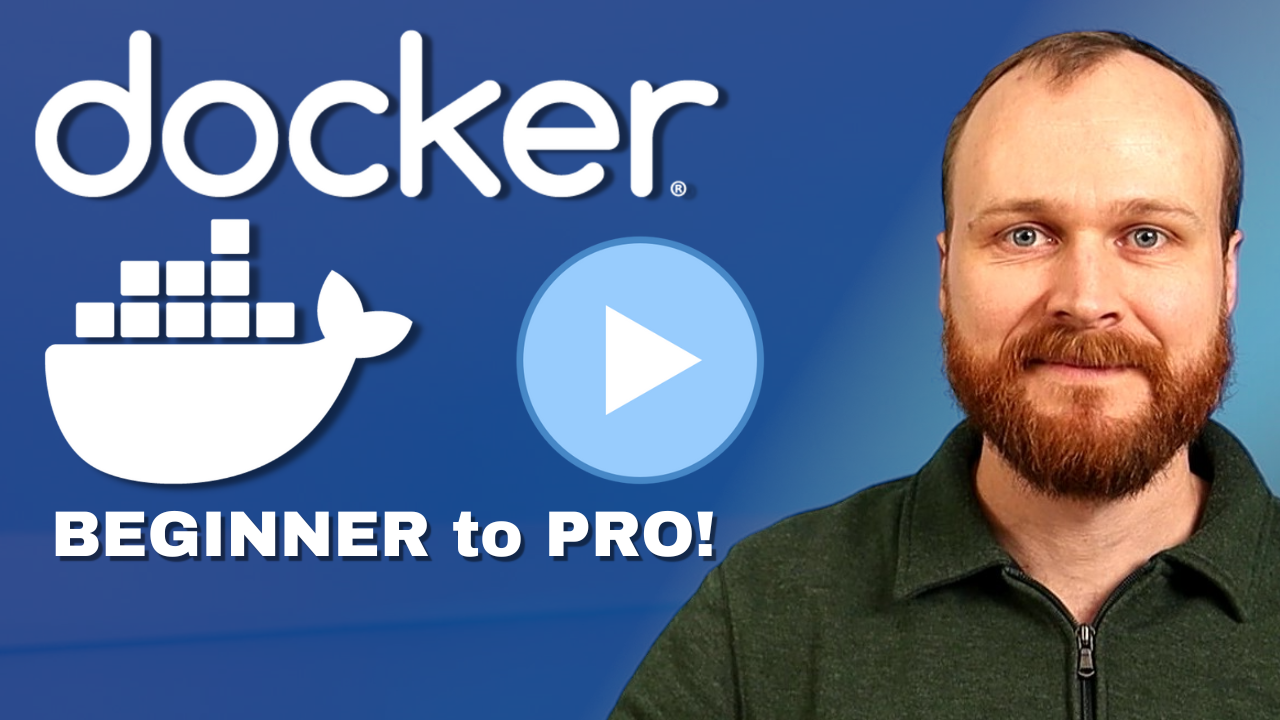1: History and Motivation
Examine the evolution of virtualization technologies from bare metal, virtual machines, and containers and the tradeoffs between them.
2: Technology Overview
Explores the three core Linux features that enable containers to function (cgroups, namespaces, and union filesystems), as well as the architecture of the Docker components.
3: Installation and Set Up
Install and configure Docker Desktop
4: Using 3rd Party Container Images
Use publicly available container images in your developer workflows and learn how about container data persistence.
5: Example Web Application
Building out a realistic microservice application to containerize.
6: Building Container Images
Write and optimize Dockerfiles and build container images for the components of the example web app.
7: Container Registries
Use container registries such as Dockerhub to share and distribute container images.
8: Running Containers
Use Docker and Docker Compose to run the containerized application from Module 5.
9: Container Security
Learn best practices for container image and container runtime security.
10: Interacting with Docker Objects
Explore how to use Docker to interact with containers, container images, volumes, and networks.
11: Development Workflow
Add tooling and configuration to enable improved developer experience when working with containers.
•Developer Experience Wishlist
12: Deploying Containers
Deploy containerized applications to production using a variety of approaches.

Debuggers
In order to make developing with containers competitive with developing locally, we need the ability to run and attach to debuggers inside the container.
Aside: Multiple Docker Compose Files
Docker compose has a nice feature that allows you to specify multiple docker compose files at runtime. This way you can define a base configuration and a much smaller overlay with customizations.
For example, lets say we had docker-compose-a.yml:
services:
my-service:
image: foobar
and docker-compose-b.yml:
services:
my-service:
command: ["echo", "new command!"]
we can then issue the following docker compose command to run my-service with the updated command:
docker compose -f docker-compose-a.yml -f docker-compose-b.yml run my-service
Debuggers
As much as we all love sprinkling console.log() and print() statements, we need to be able to use real debuggers that enable us to set breakpoints, examine the runtime state of our code, etc...
Node API
NodeJS has a built in debugger we can activate using the --inspect flag. We can set up an NPM script to utilize this:
"debug-docker": "nodemon --inspect=0.0.0.0:9229 ./src/index.js",
By default, inspect would only accept connections from localhost, but in this case we want to accept connections from outside of the container which is why we specify 0.0.0.0 (any host).
Now we can craft a compose overlay docker-compose-debug.yml to use this npm script and publish port 9229.
services:
api-node:
command:
- "npm"
- "run"
- "debug-docker"
ports:
- "3000:3000"
# inspect debug port
- "9229:9229"
With this configuration we can connect to the debugger listening on port 9229.
Golang API
In the previous lesson we added the following to our Dockerfile to install delve (https://github.com/go-delve/delve), a golang debugger.
RUN go install github.com/go-delve/delve/cmd/dlv@latest
Combining this with a compose overlay:
services:
api-golang:
command:
- "dlv"
- "debug"
- "/app/main.go"
- "--listen=:4000"
- "--headless=true"
- "--log=true"
- "--log-output=debugger,debuglineerr,gdbwire,lldbout,rpc"
- "--accept-multiclient"
- "--continue"
- "--api-version=2"
ports:
- "8080:8080"
# delve debug port
- "4000:4000"
We can run our remote debugger and connect to it on port 4000.
Configuring VSCode to use Debuggers
In VSCode, create a launch.json file inside the .vscode folder in your project root directory. Add the following configurations:
{
"version": "0.2.0",
"configurations": [
{
"name": "Docker: Attach to Node",
"type": "node",
"request": "attach",
"localRoot": "${workspaceFolder}/docker-course/devops-directive-docker-course/05-example-web-application/api-node",
"remoteRoot": "/usr/src/app",
"port": 9229
},
{
"name": "Docker: Attach to Golang",
"type": "go",
"debugAdapter": "dlv-dap",
"mode": "remote",
"request": "attach",
"port": 4000,
"remotePath": "/app",
"substitutePath": [
{
"from": "${workspaceFolder}/docker-course/devops-directive-docker-course/05-example-web-application/api-golang",
"to": "/app"
}
]
}
]
}
You may need to adjust the localRoot/remoteRoot and substitutePath settings to match your workspace configuration, but once you do you will be able to attach to the debugger from VSCode.
Running in debug mode
To use the updated configurations, run docker compose up with the dev and debug configurations together:
docker-compose -f docker-compose-dev.yml -f docker-compose-debug.yml up --build
As discussed earlier, this command will interleave the configuration from both the docker-compose-dev.yml and docker-compose-debug.yml files.